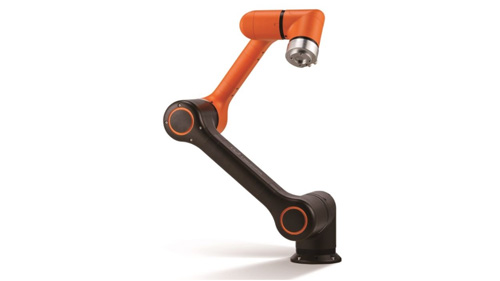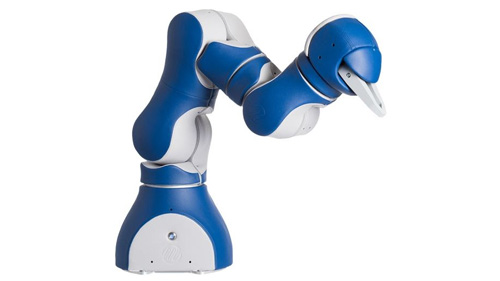Robotic arms are the most important parts of automated machines; they are the parts that hold, drag, pull, release, press, punch, and so much more. For this reason, they must have freedom of movement if they are to perform their tasks as expected. This capacity for mobility is what is called the degree of freedom.
This is a fully automated turn-key solution for die casting industry, including 6 axis industrial robot, end of arm tooling, spraying gun, working process including parts picking and release agent spraying.If you have been wondering how robotic arms are able to move the way they do, then this is for you.
What is Degree-of-Freedom in Robotics?

Source: Pinterest
In the world of robotics and mechanics, degree of freedom refers to the defined modes within which a mechanical contraption can move seamlessly without deviations. The number of degrees of freedom is the same as the total number of independent displacements as far as the aspects of motions are concerned.
Any conventional machine operates in two or three dimensions that come with a little more than three degrees of freedom. In a nutshell. Degrees of freedom is a stern that correctly defines the different movements that romantic arms use to handle their jobs without any complications.
There are different types of degrees of freedom that exist in the robot world, 6 to be exact. Each of them is designed to complete a specific role, and the more they are, the more efficient the robotic arm is. These 6 degrees of freedom in robotics include the following.
3 Degrees of Freedom Robotic Arm: This is a robot that has three joints that work alongside each other to effect movement in a robotic arm. They can be used for all kinds of robotic work from welding, pick and place, machine tending handling, and so many more. They also vary in size from small contraptions for localized tasks to huge behemoths that can handle warehousing roles.
4 Degrees of Freedom Robotic Arm: This is a robot that has four axes or joints. The last axis is located near the base of the robot, and it provides the movement and the stability needed for the entire robotic arm to function correctly. This type of robot is used in palletizing, machine loading, pick and place, automated packaging, among many other roles. The design is a little complicated compared to a 3DOF robotic arm, but it gets more done in return.
5 Degrees of Freedom Robotic Arm: This is a robotic arm that has five joints, including a manipulator, a servo-motor actuator, and corresponding arm components like the arm, the below, and the wrist. It is more complex than the previous two and can handle more due to the presence of more joints.
6 Degrees of Freedom Robotic Arm: This is a robotic arm that is made of 6 servo-motors, with a corresponding arm, elbow, and wrist. Each joint can move to a certain degree which may be limited a little but is way more than the previous lower versions of DOF. This means that the 6 DOF robotic arm is stronger and faster and can handle even bigger roles in manufacturing.
7 Degrees of Freedom Robotic Arm: This is a robotic arm that comes with a shoulder joint that has 3 degrees of freedom, a back and front flexion, external and internal expansion and rotation, an elbow joint equipped with 1 degree of freedom, and a wrist. All this provides the robotic arm with a high level of flexibility as it can move more and twist in ways that most arms can’t manage.
8 Degrees of Freedom Robotic Arm: This is the highest degree of freedom ever built in a robot so far, and it provides the most flexibility as it can turn and twist and rise in any direction to the maximum range. The only things that can limit its motions are the distance to the object or the energy required to maintain that motion.
Benefits and Limitations of the Different Degrees of Freedom

Source: Pinterest
The more the number of DOF, the more suited for its work the robotic arm is and vice versa. These kinds of robots bring a lot of benefit to the manufacture and at the same time they are limited to some extent.
Some of the benefits you should expect from a robotic arm that has a higher number of degrees of freedom include the following.
It will be more versatile and can be repurposed for a number of tasks without having to change a lot of things.
They are strangers and can handle all kinds of heavy lifting without breaking apart.
They are more flexible, which increases their speed and makes them ideal for delicate tasks that require precision and speed.
They have a bigger range, meaning they can cover more ground without even moving an inch. This is why they are heavily used in automated processes like automotive manufacturing.
As for the limitations, the following are what you should be wary of as you embark on going down this route.
The more the DOF, the more the points of weaknesses. Once one joint is done in, the entire robotic arm comes to a halt or begins to malfunction, and this can affect production.
Maintenance is not an easy task as you have to take care of each individual part without missing any.
They are complicated to operate at times and will only require the expertise of a trained technician.
Conclusion
Robotic arms continue to get better with time, and more degrees of freedom are bound to be added in the future. To get the most of your robotic installations, you have to understand how all the joints work and operate. For more information, check out our website and have all the answers to all your questions.
